Finding Low Residue Diet Low Fiber Diet recipes can be challenging. My hope is to come up with delicious recipes so that those on this restrictive diet can enjoy eating while staying healthy.
Update: I have posted a new Low Residue Diet Recipe for Braised Asparagus Tips using a cooking technique that infuses vegetable with more flavor, hoping to make eating more enjoyable for those on a low residue diet. Click here for additional low residue diet recipes.
 |
Today, I’m sharing two Low Residue Diet Low Fiber Diet Recipes that I made for someone in my community that was on this restrictive diet following a reverse ileostomy. It’s a tricky diet, but it’s possible to come up with delicious recipes that fit this diet.
A healthy diet typically includes foods high in fiber. Fiber is usually recommended as part of a healthy diet because it helps to normalize bowel movements, lower blood cholesterol levels and control blood sugar levels. However, in certain circumstances, a Low Residue or Low Fiber Diet may be recommended.
A Low Residue Diet or Low Fiber Diet is typically only recommended for a short period of time (as determined by a doctor) as it does not provide all the nutrients to stay healthy. Since a Low-Residue or Low-Fiber Diet restricts many nutrient-rich foods, sometimes a vitamin supplement is recommended by the doctor or dietician.
The following summary is presented solely as a resource; anyone requiring a low residue or low fiber diet should consult their physician or dietician for specific dietary recommendations.
When is a Low Residue/Low Fiber Diet applicable?
People who have diverticulitis, Crohn’s disease, ulcerative colitis or bowel inflammation are usually advised to eat a Low Fiber Diet and sometimes a Low Residue Diet. Also, after certain kinds of surgery, such as an ileostomy or colostomy, a Low Residue or Low Fiber Diet is usually recommended.
What is a Low Residue/Low Fiber Diet?
A low fiber diet includes refined breads, crackers, cereals, pasta, white rice, and low fiber vegetables and fruits (with no skin, seeds or pulp), limited milk products (if tolerated), well-cooked lean proteins, and eggs. See below for more specific recommendations.
What is the difference between a Low Fiber Diet and a Low Residue Diet?
A Low-Fiber and Low-Residue Diet both limit the amount of dietary fiber and residue-producing food in the diet. Dietary fiber, which is found in plant foods, cannot be digested; residue is the undigested part of plants that contribute to stool. Limiting dietary fiber and residue reduces the amount of food that passes through the large intestine, reducing the size and number of stools, helping to reduce abdominal pain, diarrhea or flare-ups of certain digestive problems, such as diverticulitis.
Although a Low Residue Diet and Low Fiber Diet are related and sometimes used interchangeably, a Low Residue Diet is more restrictive than a Low Fiber diet. Some foods are low in fiber, but can increase residue (e.g., dairy and coffee), and some foods are low in residue, but high in fiber (e.g., blenderized bran).
While the Low-Fiber Diet allows some fresh fruits (without peels or seeds), the Low Residue Diet does not allow any raw fruits. Under the Low Residue Diet, vegetables must be well cooked and without any skin; dairy products are also restricted to no more than 2 cups a day.
Here are some suggestions for foods that can and cannot be eaten under the Low Fiber Diet (be sure to consult your physician or dietician for specific dietary requirements):
Low fiber vegetables that can be eaten raw:
- Lettuce
- Cucumbers (without skin and seeds)
- Zucchini (remove seeds)
Low fiber vegetables that can been eaten if they are well-cooked (without skin or seeds):
- Beets (without skin)
- Carrots (without skin)
- Tomatoes (without skin or seeds)
- Potatoes, without skin
- Asparagus (tips only)
- Yellow squash (remove seeds)
- Pureed spinach
- Eggplant
- Green beans
- Wax beans
- Broccoli
- Cauliflower
- Brussels Sprouts
- Cabbage
- Peas
- Winter Squash
- Beans
- Corn
- Bananas
- Applesauce
- Very ripe apricots (without skin)
- Soft cantaloupe or honeydew melon
- Watermelon
- Nectarines (without skin)
- Papayas
- Peaches (without skin)
- Plums (without skin)
- Canned or raw pineapple
- Fresh figs
- Berries of any kind
- Coconut
- All dried fruits
- Fruit seeds
- Prunes
- Prune juice
Other Foods to Avoid:
- Fatty foods as these can increase residue
- Seeds (including popcorn)
- Nuts
- Whole grains and whole grain products
- No more than 2 cups of milk or milk products per day
- Spicy foods
- Chocolate that contains cocoa powder
- Caffeine
- Tough fibrous meats with gristle
Suggested Foods for a Low-Fiber Diet:
- Cream of Wheat
- Cream of Rice
- Non-fat or Low-fat yogurt
- Ground, well-cooked tender lean meats
- Poached eggs
- Well-cooked or pureed low-fiber vegetables
- Ripe or cooked/canned low-fiber fruits
- Pureed soups using low-fiber vegetables (e.g., carrot, beet, potato)
- Chicken soup with small pasta or white rice, low-fiber vegetables
Here are two low residue diet low fiber diet recipes that I hope you find useful.
Easy Chicken Soup with Pasta and Vegetables
If you’re on a low fiber or low residue diet, use whatever vegetables are allowed based on your doctor’s or dietician’s recommendations. If permitted, shredded or chopped cooked chicken breast can be added.
 |
| Chicken Soup with Carrots, Potatoes, Tomatoes, Asparagus and Pastini Pasta |

Low Residue Low Fiber Chicken Vegetable Pasta Soup
Ingredients
- 5 cups low sodium chicken broth
- 1 carrot chopped
- 1 potato chopped
- 1/2 cup tomato flesh no skin or seeds
- 1 bunch asparagus tips
- 1/2 cup cooked pastini or other small pasta
Instructions
-
Place broth, carrot and potato in a small saucepan. Bring to a boil, then reduce heat and cook until vegetables are very tender. Add tomatoes and asparagus tips and cook until asparagus is tender. Stir in cooked pasta and cook until heated through.
Easy Pureed Beet and Carrot Soup
If you’re on a low fiber or low residue diet, substitute any vegetables that are permitted based on your doctor’s or dietician’s recommendations.
 |
| Pureed Beet and Carrot Soup is Vibrant and Delicious! |
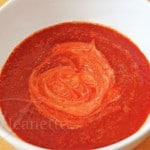
Low Residue Low Fiber Beet Carrot Soup
Ingredients
- 4 cups low sodium vegetable broth
- 1 carrot sliced
- 1 can cooked beets not pickled
- salt to taste
- non-fat yogurt for serving if desired
Instructions
-
Place sliced carrot and vegetable broth in a small saucepan. Bring to a boil, then reduce heat and cook, covered, until carrots are very tender. Add beets and cook until heated through. Pour soup into a blender and puree until smooth. Season to taste with salt. Serve with a spoonful of yogurt stirred in if desired.
If you find these two low residue diet low fiber diet recipes helpful, you might also like:
For more Low Residue Diet Low Fiber Diet Recipes, I’ve created a Pinterest board for inspiration.
Please share your low residue recipe ideas in the comments below.
Resources:
Mayo Clinic’s Low Residue Diet
Colon Health’s Low Residue Diet
Colon Health’s Low Fiber Diet
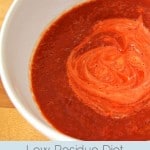
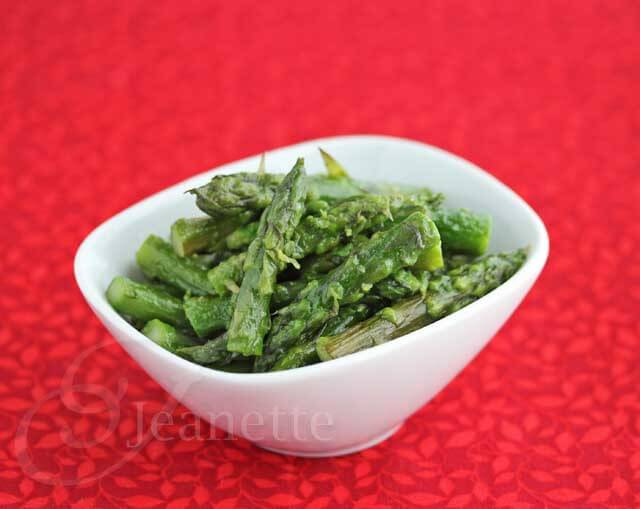
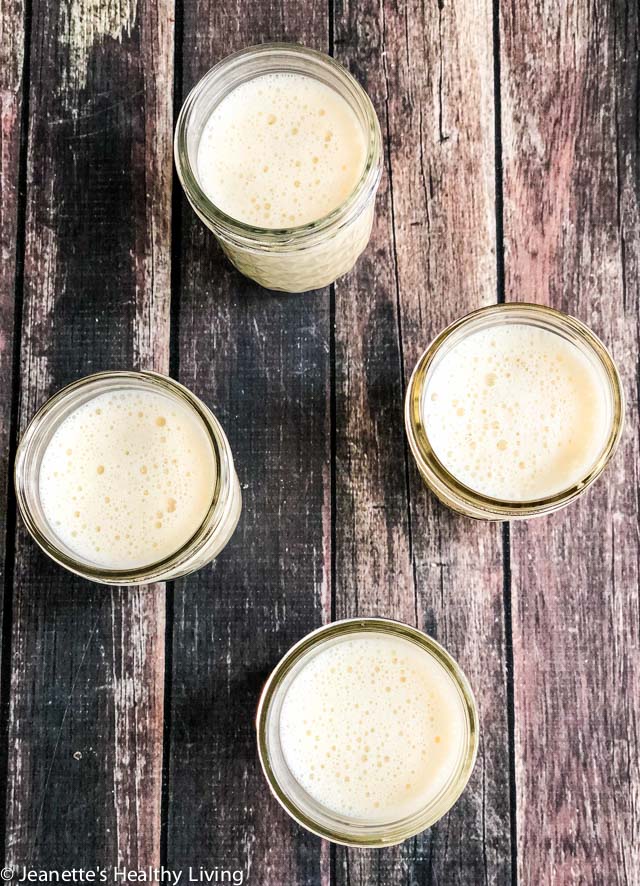
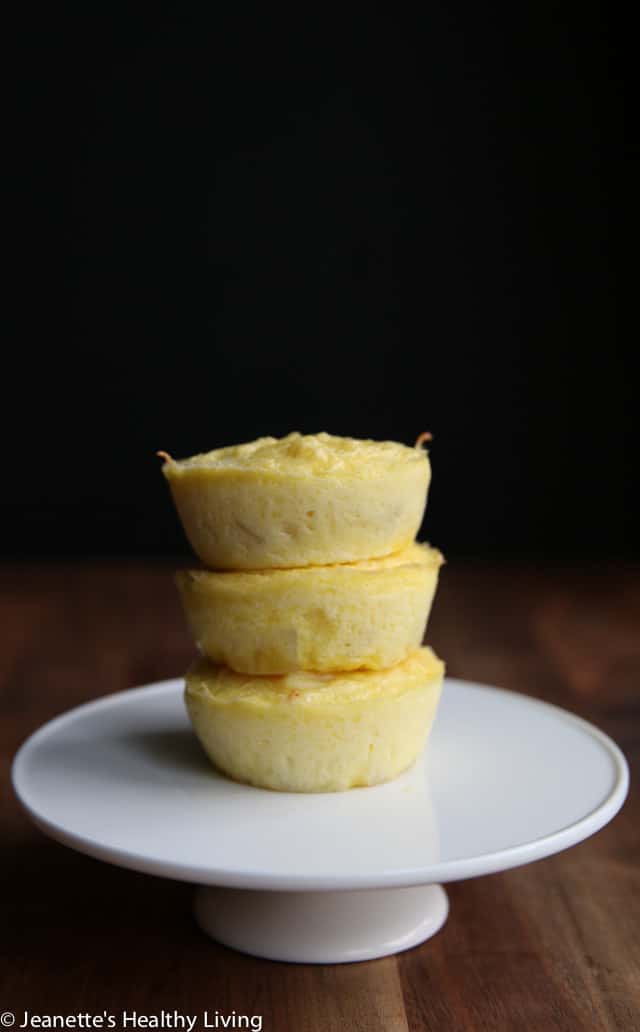
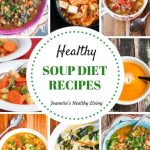

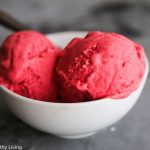

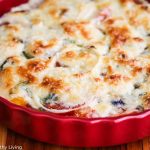
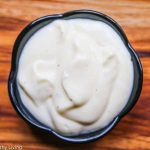
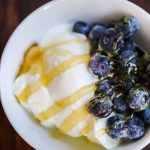
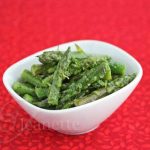

I have Crohn's and this was probably the hardest part of the disease to understand. I would add lettuce to the "don't eat" category because of its side effects. Thank you for putting this together – it is a great reference!!
AMEN!!! I have moderate ulcerative colitis and if I eat even a few leaves on a sandwich I bleed for days. I cannot consume ANY raw or crisply cooked vegetables.
Also, when in doubt, pureed soups are much easier to digest! Your friend is very lucky to have you!
At least the soups sound and look yummy!
Jane – thanks for your feedback. It is interesting that lettuce is not tolerated since it is generally low in fiber. The woman I made these soups for is on an extremely restricted diet, so it's extremely important to check with the doctor/dietician on specific dietary recommendations. Of course, it is just as important to listen to your own body and see how your system tolerates these foods.
Your blog is outstanding I will have to read it all, thank you for the diversion from my coursework! Thanks so much
Hi I have just been put on a Non Residue Diet that was ordered as a no or minimal residue so I cant have any fruits or vegetables I am so hungry and trying to make the best of my limited allowed items please can someone help me find something that I can eat that does not taste like cardboard. I can have tender lean beef,veal,lamb,chicken,fish,tuna fish,canned ham,and poached, scrambled, hard or soft cooked eggs. small amounts of mayo. angel food cake,cream of wheat, grits,jello,white bread. soups-clear chicken or beef broth. sweets-honey and clear jello in moderation. white rice,noodles plain, cereal- rice krispies and corn flakes with no milk or dairy products at all.cant have potatoes, corn,peas,all high fiber bran cereals, biscuits, pancakes,whole wheat breats,nuts,dried fruits,all fruits-fresh;frozen;dried;or cooked;or canned.no vegetables! No fried foods, meats, sausage,cold cuts,hot dogs,tough or fatty meats. no desserst with chocolate,nuts,coconut,no ice cream , yogurts,sherberts,pies , pastries, or any other dessserts made with milk products.No onions,seasoning,mustard,garlic flavoring,vinegar,cloves, ONLY SEASONING I CAN HAVE IS SALT< LEMON JUICE<VANILLA , no olives ,pickles, relishes,popcorn,catsup,steak sauce. so not sure what i can really eat other than toast , grits and cream of wheat , blan chicken can you help with a tasty recipe please?
I only have to follow a low residue diet, but really miss the taste of vegitables. However I found that a juicer which separates the pulp from the juice, rather than just making a puree makes a lovely flavoured drink, over ice. If your doctors say this is ok it is worth they cost of the juicer. I like carrot and ginger, or carrot and lime. Also tomato and celery. . Stalks of cabbage, cauliflower, and broccoli (left over from the rest of the family are also nice with a peppery flavor. You may need to filter the juice through a cloth to get the last of the pulp out of the juice, try talking to a doctor or dietitian.
Ruth, thank you so much for sharing what you can eat on a low residue diet. It is such a tough diet to be on, so the more we share recipe ideas, the easier it will be for others new to it.
Gingerale chicken. Pre-heat oven to 350. Brown chicken that has been seasoned with salt and pepper. Place chicken in a 13 X 9 baking dish. Add 2 cups/1 can ginger ale. Cover with foil and bake for one hour. Simple but tasty.
Thanks for sharing Ester.
I’m sorry Esther but just to clarify I brown the chicken before I combine it with the soda
Debra, sounds like you are on a super restrictive diet since no fruits or vegetables are permitted even if they are peeled and cooked. I just put together a few recipes/ideas for another person who is on a low residue diet. Please email me at Jeanette@JeanettesHealthyLiving.com and I will send them your way.
Could you email me some recipes as well please?
Jennifer – I have a pinterest board setup with low residue/low fiber adaptable recipes. Here’s the link: http://www.pinterest.com/jeanetteshealth/low-residue-diet-recipes/
Hi. Any chance you can email me as well? Im on a super restrictive diet and having trouble getting proper nutrition. I have short bowel syndrome, so on a low residue, low fiber (no more than 2 grahms ever), high protein diet. Im also type 1 diebetic on insulin. Just found Im anemic and cholesterol high. Mostly because so much of what I eat is bread, pasta, grits, peanut butter/jelly because it soothes my stomach. Sometimes I get to the point I have Special K cereal just to give my insides a rest. I really could use some help with ideas. I have a crock pot of roast/potatoes/carrots now. (as I need the iron from the meat) Can you please email me? : ) p.s.- Ive been to 3 nutritionists at hospitals and no help! uggg.
Try using a pressure cooker.
Try juicing leafy green veg with added ginger. Beetroot is also high in iron, so beetroot soup may help. .I have avoided pulses, and veg that causes gas and bloating. Onions, broccoli and cabbage. Have you tried puréing potato then add for thickness. Try sweet potato, squash or butternut.
I found almond milk easier to digest. You can also cook rice in chicken stock, make vegetable stock yourself drink as soup. At least you get the nutrie
Best of luck. It’s a long journey of trial and error so I keep a food diary.
Thank you so much for posting this! My son was recently diagnosed with both Ulcerative Colitis and Primary Sclerosing Cholangitis (PSC). It has been so hard to figure out what to cook for him and what he can & can't eat, but still get the nutrients a growing 6 year old needs. This is very helpful – thanks again!!
Lynn – this is a tricky diet as some people have a hard time with fruits and vegetables as well. Best wishes for you and your son – let me know if I can help further.
Hi,
This kind of blog always useful for blog readers, it helps people during research, your post is one of the same for blog readers,Interesting blog, It would be great if you can provide more details about it. Thanks you.
Do you think a basil pesto pasta would be considered low residue
Thank you Healthy Recipes – I hope to add more recipes that are low residue in the future.
Darrell – I would definitely check with your doctor/dietician on this. Pesto often includes nuts, so you would have to make your own pesto to be sure there were no nuts in it. Also, you might need to blanch the basil first as raw vegetables are not always tolerable by people on a low residue/low fiber diet.
Found this recipe for a Greek Lemon Soup that might work for a low-fiber diet:
http://theviewfromthegreatisland.blogspot.com/2011/09/avgolemono-soup.html
Hello from Oz I just wanted to share with you that I live on a gluten free NO residue diet and all my food is either non residue like protein or cooked blended and sieved.. and I find it all manageable.. Annoying at times.. but manageable.. I try to be grateful for what I CAN eat.. and that helps.. This is a great resource for people just finding their way..good luck.. Wendy
could you elaborate on the diet you are taking…. I have been advised gluten free low residue diet… and i am finding it difficult as i am a vegetarian.
Vishal, I am not on a low residue diet, but was cooking for a friend who was. This diet is even trickier for vegetarians. I would check with your dietician to find vegetarian sources of proteins that you can eat.
Hey Miss wendy I know its been a long time since you posted this but any chance you still remember what no residue foods you were eating?
Since the lettuce question wasn’t answered, I’ll say that as a person with Crohn’s lettuce is tolerablebut not very friendly. It may be low in fiber, but it is one of the things that usually isn’t fully digested. Not sure if it makes anything worse, but it doesn’t seem to do much good. I have noticed this most with iceberg lettuce.
It sounds like lettuce is somewhat tolerated but may not be the best thing for someone on a low fiber/low residue diet. I think it probably depends on how strict a diet the person is on and what the dietician recommends, although better to play it safe to avoid discomfort.
Well, I’ve found lettuce to not be tolerable at all. But, everyone is different. I cant have over 2 grahms of fiber EVER. I’ve just discovered a Village Salad made at my greek restaurant in town that has NO LETTUCE. Tomatoes, cucumbers, onions, beets (Im learning to eat), with their yummy greek dressing and grilled chicken on top. SOOOOO good.
My young adult son was just diagnosed with Crohn’s. Taking prednisone and 6mp, Percocet for pain. I am working on a low residue diet for him. Still trying to ascertain what foods work and what won’t from the list.. Very inconsistent right now. Can you crohniies tell me how long before you finally got relief and felt somewhat normal following uthe medication and diet?
I was diagnosed with Crohn’s disease about 6 months ago and was advised to be on this low residue/low fiber diet. The diet itself is difficult because the things I want to eat most…are the things I can’t have! Lettuce has always been an issue with me, maybe because I have Gastroduodenal Crohns, either way I don’t think any Crohn’s patient would like the feeling after eating it. But once I started getting strict about this particular diet…I have felt so much better! I started with a few sample menus that I found online for breakfast/lunch/dinner and then started switching it up.
It would be wonderful if you could share these menus or recipes!
My son has Crohn’s. bit by bit most foods have been eliminated.
Chicken, white fish, and white rice is getting boring for him.
He won’t eat soup which isn’t surprising as warm liquids can alter the eating/digestive experience.
Hi Lydia, I have a Pinterest Board that I started to pin recipes that might work for this diet (some need to be modified). Please take a look. I hope this helps you. http://www.pinterest.com/jeanetteshealth/low-residue-diet-recipes/
Thanks so much Jeannette, your pin board was just about the only thing I found on Pinterest for Low Residue, I so appreciate that you took the time to post and share those!
Fellow Chroniies– this diet helps but isn’t a long term solution (in my experience) so do talk to your doc/dietician and adjust what works for you. So many of us are dealing w/ allergies and additional sensitivities that makes a restrictive diet even more limiting so it can be hard to get the nutrition you need but dont give up. It took me awhile to learn to like bland (and I still crave fatty foods 🙂 but the diet really reduced my flare ups, hopefully it helps others!
Mariah – glad you found the pinterest board helpful – definitely check with your medical doctor/nutritionist/dietician to make sure you can have the ingredients in any of these recipes, but hope you’ll find some inspiration here.
Invest in a juicer if don;t already have one. I juice my fruits and veggies and it tastes very good. i still get my vitamins that way. good luck
a family member just had a procedure that allows her menu to be only low lactose / low fiber diet, it would be great to be able to get a few simple recipe ideas together for her, for all of the food we have been making has been very boring and blan, we would love to be able to make her meals a bit more enjoyable
This is a very handy page. I have ulcerative colitis and am trying to maximize the tolerable vegetable nutrients in my diet. I think I will give the cooked pureed spinach a go by working small quantities of it into other recipes. Also in terms of the lettuce question… my experience has been that green leafy lettuce (not iceberg or romaine) has the softest leaves. I would never eat a whole big salad of it, but a few leaves at a time, chewed real thoroughly towards the end of a meal (when there is already other stuff in my stomach for it to mix with) doesn’t seem to bug me.
Rebecca, can you please advise what type of lettuce it would be when you refer to green leafy lettuce with soft leaves that is not iceburg or romaine/? Thanks, Kay in Canada. Crohn’s patient.
Jeannette, just found your blog while searching post-surgery for low fibre food info. It is very informative and looking forward to reading more than I have tonight. Kay.
Rebecca, would you be talking about “Butter” Lettuce???
i have done a lot of online research since my grdaughter was diagnosed with Chrons a week ago and the lettuce suggested is butter lettuce- anybody tried it?
Butter lettuce is delicious – soft and buttery! It is my favourite lettuce.
I don’t have any dietary or digestive problems myself. I found this blog because I was looking for low residue recipes so that I can prepare something nourishing and tasty for my husband who has recently undergone a permanent colostomy. He also has bouts of diverticulitis that have to be managed with a clear fluid diet for a couple of days.
We’ve been advised that any type of lettuce, or really any leaf that is raw, is not well tolerated by many with an ileostomy or colostomy, so best to avoid it completely. Hard for those who like ‘crunch’.
Since he came home from hospital just over a week ago I’ve made up a batch of lean ground beef ragu with a little onion powder, garlic powder, a little salt and pepper, and chicken stock, plus a pinch of dried parsley flakes which we’d been told was OK. I started off by browning the meat just a little before adding the seasonings and chicken stock, and cooked it very slowly for quite a long time to get all the flavours to meld. It turned out really well and I’ve been able to serve it to him with small-grained white pasta, white rice, mashed potatoes, both white and sweet. He loved it and it has not caused any problems.
For his sweet tooth I bought some no-fat plain Greek yogurt to which I add a little Splenda, (he’s diabetic too!), and cooked and pureed apple sauce. (I always buy lots of Honey Crisp apples in the Fall, peel and de-seed them, and keep them in freezer bags). He liked that too.
I’ve always made soups but he can’t eat onions just yet, but I’ve already made carrot soup, potato soup, tomato soup, (strained that though to make sure no pulp or seeds remained), with just a little onion and garlic powder, s & p, and low-salt low-fat chicken stock.
Yesterday I marinated a small piece of pork loin in: Dijon mustard/soy sauce/orange juice/tsp olive oil/garlic powder/s & p. Then I roasted it slowly in the oven. Once it was cooked through I removed the meat, kept it warm under foil, and put the sauce on top of the stove to reduce it. I served it with roasted potatoes and roasted carrots. The sauce was delicious, and he enjoyed that very much.
Love all the information on your blog, and I’ll come back again to find more great information and recipes.
Thanks so much for sharing Brenda – always great hearing what works for everyone.
I just found your blog and thank you God I did. I recently have been diagnosed on with gastroparesis and have been placed on a low fat low fiber diet. I have been struggling with different ways to prepare the very few items I am allowed to eat. I noticed on the blog you posted that you have friend who has had to be on a restricted diet such as this and have recipes that you would be willing to share.
Thank you so much for your help.
Darla, I, too, have gastroparesis. I hope you will find the following website helpful: http://livingwithgastroparesis.com. I purchased a few of her books which have given me more information than I received at the gastroenterologist. Best wished to you as search for ways to cope.
Great post Jeanette and such perfect timing! My dad has been dealing with diverticulitis the past few days. I’ve been working with him on his diet, and he is doing much better, but I’m sure he’d love to try your easy soups {he loves to cook!} Your chicken soup is especially calling out my name too-love the addition of asparagus tips to the soup!
This is such a tricky diet since some people can tolerate foods that others can’t. If anyone needs more ideas, just let me know by email.
I have the problem where I have c dif and my husband is diabetic. I am trying to find recipes to suit both of us. Is there a cook book out there that anyone would suggest? I’m at a loss. He’s also quite picky but you can’t help me there. Thanks,
I sympathise, I am both diabetic and need a low residue diet, they contradict each other. However I find that with care I can manage to make interesting dishes, for example stir fries with root vegitals shredded on a mandoline, and then pre-cooked in the microwave,. Fruit purees without the skin or pips served with yoghurt or ‘no added sugar ice cream’. Stews cooked in a slow cooker are also great, flavoured with a range of differenty herbs done up as a bouquet garni, and removed before serving
Thanks Ruth… You gave me some really great ideas…
Thank you so much for this. I have a friend in treatment for colon cancer who is also having her first child (tomorrow!). Trying to plan meals for her during this complicated time has been very difficult and so your information and recipes are perfect. Many thanks.
So sorry to hear about your friend, what a tough time in her life. Let me know if you need some more ideas.
I’ve been recently on a low residue diet, and getting away from sugars now. What I’m a little confused about is the breakdown of white rice, crackers, bread, etc. that breaks down as sugar. I’ve been staying away from breads for a long while now, so its been weird intigrating them back. Always a challenge with this one… grateful for you
Shane, the low residue diet is a bit tricky as it is very specific to each person. I would check with your dietician if you have any specific questions. If you figure out what you can eat, let me know if you need some recipe ideas.
okay, thank you. wasn’t sure if this may of come up for you prior. love the recipe ideas too and to know there are some veggie that I can try that are lower fiber.
Thanks for this Jeanette, it is great! My BF was recently diagnosed with ulcerative colitis, and as I do all the cooking for us, I’m always looking for new recipes and ideas, especially since he LOVED veggies and fruits, and beets was one of his favorites. It’s been hard on him not eating these things anymore or as much. I am making him this beet & carrot soup tonight! I think as you have said several times, every person is different, and should consult with their Dr., and/or nutritionist if they have a problem or question, but to weigh in on the lettuce thing, my BF can have it as well, as long as it’s like iceberg or butter, and not field greens or romaine. And of course, you want to eat maybe a cup or so, not a huge plate. I think a good rule of thumb is you don’t want things with a thick, fibrous stem (like down the center of romaine or collard greens). Of course, if you cut that stem out, and cook the item, it does help. But again, since this effects everyone different, you need to take caution with a food before you know how your body reacts to it. @Debra, don’t give up hope. A lot of times, they’ll put you on no fruit/veggies at all until your body can repair itself a little. Then they’ll suggest you add one low fiber fruit or veggie at a time (so you can see if it bothers your system or not) and see what ones you can eat. And then if you have a flare up – you go back to no fruits/veggies at all for awhile. But now, my BF can eat cooked carrots, green beans, banana and then squashes, cucumber, tomato, apples and potato without the skin and/or seeds. Thing like peanut butter, he can have as well, as long as it is smooth and not chunky. I’d love to have your other recipes, Jeanette, and anyone who wants to trade low-fiber healthy recipes with me, or tips on how to deal with this type of disease, please feel free to email me. Just put “low fiber friend” or something similar in the subject line, as I get a lot of junk mail and tend to delete things easily if they are not obvious! tigerlily_hm76@yahoo.com
Heather,
Thanks so much for sharing your experience cooking for your BF and for your encouragement. I will email you some more recipe ideas, and would love to hear what you come up with, as I know it can be so frustrating at first to think about you can eat.
May be good to substitue the red beets for yellow ones. I have Crohns and find that it often somes out looking like I am bleeding. It is a very unnerving thing!
Hi, thanks for posting ideas… I have appendix cancer ( yes, appendix), which is treated somewhat like colon cancer. Right now, I’m having sub-occlusions (my intestine is constantly blocking, or half-blocked), so I have to be on a pretty restrictive low-residue/fiber diet. What I miss the most if fresh fruit, and I found a way to get some… I was craving pinneaple the other day, which is a big NO, so I bought one and juiced it. Pinneapple juice is incredibly delectable! Did the same with strawberries and mixed both together. Yum! Just sure to seriously strain the juice!
My son in law just had a colostomy. My daughter asked me to look for a Cookbook to help her. Is there one that you would recommend? Thanks. Brenda Gold
Hi Brenda, I have yet to come across a cookbook with good low residue recipes, but will keep my eye out. If I learn of any, I will post it here.
I have recently been put on this diet as well for Ulcerative Colitis. It is very hard to come to terms for me in the types of food now sitting on my plate. In the past I have been a vegetarian, though I began to eat a bit more meat after the birth of my child. I have lived on salads, and beans and whole grains, nuts and fruits and vegetables – very healthy fare for a very long period. I am also I think, gluten intolerant… and now it is white bread and meat on my plate. It makes me very sad. But I just wanted to say thank you for this site, it is helpful to see it can be done, with grace and even a little yumminess perhaps..
Hi Bunny, the Low Residue Diet is one of the most difficult diets that I have come across, and especially tough if you are used to eating foods high in fiber. I am hoping to spend more time trying to coming up with ideas for people on this particular diet as there seems to be a void of recipes.
Bunny, plenty of gluten free options for UC! Don’t go back to wheat… I really think that gluten and other intolerances are what creates the flares. I started eating gluten again after being off it for 6 months, and I flared within 3 weeks. Stick with white rice, sweet potatoes (without the skin), gluten-free bread (I toast it and spread creamy almond butter on top, plus a drizzle of honey). I am trying to stay low-residue as well… plus I’ve learned that I’m slightly allergic to eggs, soy and dairy, so I’m cutting out anything that my body might rebel against. So my typical meals include:
– homemade yogurt. Sooooo easy to make! And if you let it cook for 24 hours, it creates 700 Billion units of probiotics to heal your gut (and all the sugar and lactose are gone). Just started this and am really hopeful based on a lot of feedback on the forums. I mix this with a little honey and some blueberries.
– Shakes. My favorite right now is pumpkin banana. 1 can of pumpkin puree, 1 banana, a bit of honey, some almond milk (be sure to check the label and DON’T BUY ANYTHING WITH CARAGEENAN. This additive has been linked to intestinal bleeding.) Add some cinnamon and a splash of vanilla extract. This will last me 2 days. Also, be sure to use a ripe banana… otherwise the sugars haven’t matured and they’re hard for your body to process.
– Fresh juice. Get a juicer if you don’t have one. It’s the best way to get all your fruits & veggies. I’ll juice 2 carrots, 1 apple, 1 beet, and then all the greens that I can’t normally eat. I’ll include kale, spinach, parsley… you really can’t taste it but you’re getting all the goodness without the fiber.
– salmon with steamed sweet potato. The Omega 3’s are anti-inflammatory.
– Homemade chicken soup. Like the yogurt, so much healthier for you than storebought, tastier, and easier to make than you’d think. Let it cook for 12 hours so all the vitamins, etc. from the bones totally permeate the broth. Include some carrots, which I’ll then puree and mix back into the broth. I’ll throw away the celery and onion and bones, and I’m left with really tasty chicken/carrot stock with chicken meat. Flavor with Bragg’s liquid aminos (thanks for the idea of asparagus, I’ll definitely include next time!)
Jennifer,
How do you make your own yogurt? Do you use raw organic milk? Would love to have the recipe.
Thanks,
Randy
Hi, is pesto (no nuts) ok to eat with white pasta?
Hi Michele, you will need to check with your dietician to see if you’re allowed to have basil. Find out what vegetables you can have.
thanks Jeanette
Michele, if you want some recipe ideas, let me know and I can email them to you. You’ll need to check with your dietician to make sure you can have these foods of course, but hope some of these ideas help you.
i have been put on a low residue/low fiber diet due to severe constipation with a colostomy. i have had my colostomy and urostomy since october 2011. i had an episode of constipation that hospitalized me for 2 day in november following my surgery so at that time it was thought to be contributed by the narcotics. however in march of this year i was again hospitalized for 10 days with same symptoms/problem. after some tests and ruling out a kinkage my dr. told me to stay with a lowfiber/low residue diet. no raw veggies (all the cooked i want the more cooked the better) no whole grains no corn no nuts. she encouraged yogurt ice cream and said anything liquid i cannot go wrong with liquids. i have been trying to find out more about this diet because it just seems like theres so little that i can eat. she encouraged string cheese however i have recently discovered that my stomach cannot handle cheese! i had been suspicious of that from the begining and after 2 bad episodes following eating some string cheese i am convinced to stay away from it now. i am unsure about some things such as crackers that are made from wheat flour? or things made from corn meal? are these allowed or should they be considered whole grains?
Michelle, so sorry to hear about everything you’ve been through. I am still learning more about the low residue diet. I would check with a dietician that specializes in this area. I have been told that dairy products can be hard on the system, so cheese may be (as you have discovered) hard to handle. Instead of dairy milk, you might try non-dairy milks like rice milk, canned coconut milk or almond milk (which has very little fiber). You might be able to tolerate low fat Greek yogurt. Also, onions and garlic are not good for the low residue diet. White bread, white flour are fine, so crackers made with regular flour (now whole wheat flour or whole grain flour) might be ok but corn meal is considered whole grain. If you can have bananas, try freezing them and blending them to make “ice cream” instead of eating dairy ice cream. Lean chicken and fish can be flavored with fresh herb sprigs, which should not be eaten, but can be removed before serving. So, for example, you could marinade chicken breast with thyme, sage or rosemary and a little olive oil and salt. Then grill or bake. You could also poach chicken with ginger or herb sprigs and remove before serving. These are just ideas, so please be sure to run them by your dietician before trying. Best wishes.
I just found your web site..I am hoping you can help me. I have been diagnosed with gastroparesis/irritable bowel. I don’t go to the nutitionalist until next week. Right now I am on a strickly liquid diet/non fat/no dairy. I have already lost considerable amount of wieght and my body can’t take much more. I started out at a size 14 5 years ago now I am into a 2, and down to 102 lbs. I look awful! Can you help me? My e-mail is attached any suggestions or recipes are greatly appreciated. Thank you for posting such a helpful web-site.
Thank you Jeanette, this information on this post is great… It give me questions for my Dr about my diet…
Thanks to everyone for your postings . Just had small bladder resection and could use recipes. I enjoy immersable hand blender instead of blender.my dr. Gave me limited information on diet. I haven’t had fresh fruit, veg or green salad in years. Looking for recipes!!!
Susan, I’m working on putting together a cookbook with recipes as there seems to be such a need for it.
I am on a low fiber diet. Can I blend cooked beans and put in my soup? I am to stay away from beans, etc. because of the residue.
Diane, check with your dietician/nutritionist, but even if you blend the beans, you have not removed the residue, simply ground the beans up.
After 13 years of trying to get my daughters gut problems diagnosed, at 28 years old she has just been diagnosed with Crohn’s. She is not allowed to eat any fruit and only low fibre low bulk foods. I don’t know what to feed her. She ia severely allergic to all nuts,seeds and chic peas, seafood, meat and can only tolerate 1 egg per week. She ,like others on this site reacts badly to lettuce , also celery and cucumber.Has anyone got any ideas of how she can get some nutrition into her system. She is soooo over not being healthy and thousands of hours spent on the toilet. Poor girl.
Hi Sue, how awful it must be for your daughter! Juicing has worked well for me to get all the necessary vitamins & minerals without the fiber. Also shakes. She might try a staple of the Specific Carbohydrate Diet which is the homemade yogurt fermented for 24 hours…. many people have healed their gut through the extremely high probiotic count (and there’s no sugar or lactose left after 24 hours). Homemade chicken stock, if she can eat chicken. Is she allergic to game meat (buffalo, venison, etc) or grass-fed cows? I am finding a lot of people are allergic to the meat found in our grocery isles because most animals are fed GMO corn and soy (not part of a normal diet and many people have corn & soy allergies). She may do ok with meat that was in the wild.
Jennifer, can you please share your recipe for “Homemade Yogurt”… Very much interested… Thanks…
Hi Jeanette, My mother has been diagnosed with diverticulitis and I’m VERY new ti all thiese foods . I’m wanting to know is there biscuits like a creamcracker or something that she can snack on and exactly what can she put on it, What do I look for on a packet of food befor i buy it for her.I’m VERY confused, She has always liked pasta and says she’ll eat pasta everyday if she has to. BUT is there a special pasta i have to get know.
Hi Bellinda, this diet is so tricky – everyone has different foods they can tolerate and what works for one person doesn’t necessarily work with another. From what I understand, anything made with refined flour is fine, so you will need to check the ingredient labels carefully. If it says whole grain (e.g., whole wheat, barley, oats), that would not be good for someone on a low residue diet. As far as I know, regular pasta should be fine, again not whole grain. See this article – this might help clarify: http://www.mayoclinic.com/health/low-fiber-diet/my00744
I am so excited to find this conversation about low residue diet and foods. I was recently in the hospital for 4 days with a partial bowel obstruction due to intestinal adhesions. I was told that a Low Reside diet for the rest of my life is the only thing that will keep me out of pain, out of the hospital and away from intestinal surgery. Pain and fear are great motivators so I will eat mush forever if that is what it takes. Having said that, I would like to eat flavorful mush, but my extensive search for recipes or cook books or food/nutrition lists for those of us who must eat like this in an ongoing basis has not been very fruitful. This is not the same as Low FIber! I think I read that you might put together a Low Residue cookbook??? I hope so. SIgn me up. This site is this most encouragement I’ve come across to far. By the way, I have can only eat pasta if it’s really really over cooked. Al dente is too firm/hard/raw and absorbs too much water from the intestines which causes more problems. Keep up the good work and thank you!
Hi Jeanette, My hubby has just been diagnosed with Diverticulitis, he was put on a Low Residue Diet and reading through your website I found it very easy to follow. All the info was very helpful to me and I will definately be trying out some of those recipies…thanx again
Hi. My whole life is a low fiber/low residue diet. I was diagnosed with stomach cancer as an infant 49 years ago and happily live to tell about it. They removed much of my large intestine and part of the small intestine leaving me with major stomach adhesions, ibs, ibd, crohn’s, short bowel syndrome. You name it, I got it. Heres the deal. I cant have over 2 grahms of fiber EVER. So I’ve been on this diet 49 years. Every once in a while I’ll have to go to the ER for stomach blockage or for dehydration. The key to this all is a good balance and make sure to drink a lot of water. I have issues in that I have diarhea as a norm so I have to also have a diet with more protiens.
I’ve just started a new blog at http://itsastomachthing.wordpress.com Feel free to check it out or email me with questions as dealing with it my whole life. So thi is……my life. LOW FIBER GAL. lol
Hi Maria,
Thanks for sharing your story and your blog – great to have people in this community sharing what works for them and what doesn’t.
Hi. I’ve tried to post here before, but for some reason the post didn’t go thru so I’ll try again. : ) Im 49 years old and was born with Stomach cancer and am here to tell of it. Kicker is that its left me with needing a low fiber diet throughout my whole life. SO. I’ve dealt with this for a zillion years. Two years ago I found out Im type 1 diabetic so now all the rice and carbs I use to use to calm my tummy aren’t always an option. I seem to end up in the ER on several occassions for bowel obstruction too as I have severe abdominal adhesions on top of short bowel syndrome, ibs, ibd, chrons and colitis. Life really has its ups and downs, but I try to be as positive as possible.
I just recently started a blog on helpful hints on what has helped me survive and what I can and cannot eat due to having to live on a low fiber diet daily. I can’t have over 2 grahms of fiber a day. Many Doctors have tried to say “more fiber”, and my body just cannot handle it.
I’d be glad to help if anyone has questions. And, if you need anything for your recipe book just contact me since I’ve been dealing with this soooo long let me know if you have any further questions. : )
Thanks.
Maria
Meeesha77@gmail.com
Here is my blog site if an are interested: http://itsastomachthing.wordpress.com
Oh, and I’ve found that the key to survival is 4-5 small meals a day and plenty of water!!! Dehydration is a huge problem and sends a lot of us to the ER.
Maria – thanks for all your help – appreciate your tips. I am hoping to put together a mini recipe book for people as a resource, so I will certainly reach out to you. Thanks so much.
I would be very interested in a low residue/ low fiber diet book. How do we get on your list. I have diverticulitis attacks. At a loss for ideas since I always cooked with lots of veg. I really miss onions and stewed tomatoes.
Janice, I’ve setup a Pinterest Board to collect low residue/low fiber adaptable recipes. Here’s the link: http://www.pinterest.com/jeanetteshealth/low-residue-diet-recipes/
Hi – Thanks everyone for your posts. I have just been put on a Low Fiber (Residue) Diet for 6 weeks (doctors follow up) for GERD (and other issues). This is what is listed under Foods Allowed: Milk products such as plain yogurt, ice cream, pudding and cottage cheese totaling less than 2 cups a day. Milk only as an ingredient. Refined cooked cereals like cream of rice, cream of wheat, cornmeal, farina, Malt-o-meal, corn grits, refined dry cereals like puffed rice, cornflakes, rice flakes. Cottage cheese, mild American Cheese. Poached, scrambled, shirred, hard or soft cooked eggs. All strained fruit juices, canned fruit, vegetable juices. Corn grits, white rice, macaroni, noodles, spaghetti (made from refined flours). Well baked, broiled or boiled and tender (without connective tissue) lean beef, veal, lamb, pork, chicken, turkey, fish filets, canned tuna fish, crabmeat. Mild spices including salt, lemon juice, vanilla, cocoa, cinnamon, allspice, mace, thyme, sage, paprika, vinegar. Clear beef and chicken broths, chicken noodle soup, chicken and rice soup. Sugar and Sweet – all in moderate amounts: clear sugar candy, honey, clear jelly, marshmallows, sugar, syrup.
Foods Not Allowed: No potatoes, wild rice, corn, lima beans, dried beans or peas. All bread and crackers containing whole nuts, bran or seeds, quick breads, waffles, pancakes, whole-grain or wheat breads and cereals. Sharp yellow or other strongly flavored cheeses. All fried meats or eggs. Highly seasoned, smoked or pickled meat such as sausage, cold cuts, franks. No nuts. Seasonings: All other, especially pepper, cloves, mustard seed, nutmeg, onion or garlic flavoring, ketchup, chili sauce. All other soups.
I am having such a hard time figuring out what exactly I can and cannot eat as I have never been on a restricted diet before and I love anything made with tomatoes (Italian food is my favorite). Any recipe ideas or a place to start would be appreciated. I was also told to eat more smaller meals throughout the day instead of 3 meals a day. Thank you for taking the time to read my post. I am including my email address: mfaulstich@cox.net.
Hi Melinda – thanks for sharing. I just emailed you some recipe/meal ideas.
I’m so glad I found this blog post. This helps me understand what I have been dealing with for 45 years. When I was an infant, I had much of my small intestines removed. Doctors never shared that I may have digestive problems, even after I have had other bowel obstructions. I have gone from doctor to doctor trying to find answers. I was taken off gluten, then found I have fructose and lactose intolerance. Through trial and error, I have played with what I eat so I feel well. I have searched for ways to heal my digestive system, then discovered that this is probably all due to my surgery as an infant. Thank you for sharing this. I wonder if I’ll be-able to try some cooked carrots, beets, or sweet potatoes? Those were taken from me on the fructose intolerance diet. Now I realize I need to accept what is going on instead of searching for a way to get over all of this. Wow, I have a lot to learn. But everything is making sense now.
Thank you!
Hi I have a friend that is not able to eat foods with seeds, stings, no salt and soft and blended foods
I was just diagnosed with distal rectal cancer and would love to get a list of some recipes that you have based on a low residue diet. I presently am not allowed any dairy products, vegetables, fruits, or seeds. I am eating a microwaved egg on white bread every morning and chicken and white rice or white pasta for my other meals. I would love to have something nutritious.
Hello. I had my large intestine removed 3 years ago and still have diarrhea all day, every day. It was just recommended to me to be on a low residue diet. I also have celiac disease- so no gluten. I saw in some of the posts that you have recipes. I would love to have some as I am having a really hard time figuring out what to eat. I will keep reading, you have so much good information.
Michelle, I just sent you some ideas.
Hi Michelle & Jeanette,
I have Celiac & Crohn’s. I have been gluten free for 8 years now and just this past year found out about the Crohn’s, so now had to add the low residue diet. In the past two months I have been in the middle of the worst flare up I have ever experienced leading me to a liquid diet. The past 8 years I always continued to have diarrhea all day, every day even with the GF diet but then two months ago I started vomiting as well after eating even my so called “safe foods”. I am now able to only eat small amounts at a time spread through out the day of: cream of rice w/ coconut milk, homemade apple sauce, a FEW BITES of chicken or ground turkey & lots of water. I make sure to chew every bite to a pulp (no fun) before swallowing. Other than the applesauce there is no way I could tolerate any other fruits or veggies at this time. Especially lettuce, I get blood in my stool within 20 min of eating any lettuce. Since some time the GF & low res diet contradict each other I would love any new ideas for recipes either of you might have. I do have to say I seem to be doing a little better this week after recently starting Humira and only eating these few things. I am positive it will continue to improve so I can go back to work and do normal everyday things with my Daughter. Michelle hope you are doing better, let me know if I can help in any way.
Thanks so much for this Blog. It is helping me. Does anyone know of a cookbook that I can buy? I am getting tired of eating the same old things. I need more ideas. Also, as an FYI, my sister told me about the Nurition Bullet blender. It really emulsifies everthing to a liquid. Check it out. I haven’t ordered it yet, but am seriously considering it. It sounds like what we need to make digestion easier. I wouldn’t mind drinking my meals for a while, especially the ones I am getting tired of eating. Thanks again. I will be checking back.
Sorry guys, it’s the NutraBullet system, not the Nutrition Bullet blender. I just ordered it. There were two testimonials from people with problems like ours.
Thanks for sharing your suggestion. I have some ideas I’ll send you.
Newbie to all this… Would love to see some recipes that can cook for the husband & I… Jeanette, do you have these recipes on your Pinterest??? If yes, which of your boards are they on??? Thank you, PAcheryl…
Hi PAcheryl, I don’t have a Pinterest board for these recipes, but that’s a great idea. I’ll start one and leave the link here.
if you have any good recipes i would love to have them. my situation is difficult because my husband is vegan and then there is my diet. any suggestions?
I have a pinterest board with low residue/low fiber adaptable recipes. Here’s the link: http://www.pinterest.com/jeanetteshealth/low-residue-diet-recipes/
OMG, I’ve been googling on diverticulitis for almost a week now. Jeanette, yours is the only site with decent recipes and better than average facts (does seem like some folk say one thing is good that others say is bad, such as peanut butter – someone said the reason it’s bad is because it has a lot of fiber). Oh, also onion seems to be another that people disagree on. And I just got a butternut squash to make soup. But anyway I digress.
Great site! Please do send recipes and please do write cookbook and let us know.
Seems people here have been successful with juicing?
My doctor, who is very alternative, seemed to think no on this.
My third attack: I’ve learned to put things in my already good fresh frozen chicken stock from Bristol Farms (prob even better if you have time to make fresh) like green or red (not chili) peppers, basil and spring onions,
and then I just strain them out before serving. Makes a lot more tasty.
Here’s a recipe that seems good if you can have lean meat:
Chicken breasts
Potatoes (peeled)
Carrots
(Celery that you can throw out after cooking)
Onions that you can throw out after cooking if not tolerated
Slice potatoes, onions, carrots, etc. and layer with chicken in casserole dish (or crock pot)
Recipe said to add water; but I add chicken broth and bake in the oven.
I’m about to make it and going to add a sweet potato too.
I also just heard of the NutraBullet (apparently quite reasonable, especially with discount coupon at BB&B.
Thanks, Jeanette and you all.
Barbara,
So glad you found this post and shared your experience. This post has become a great forum for people like yourself to share their experiences and ideas for foods that have worked and not worked. Of course, everyone has different foods they can tolerate, but I am so happy that people like yourself have felt comfortable sharing your ideas.
Jeanette
Chicken stock is so easy to do in a slow cooker, if you have bones from a cooked chicken put them in the slow cooker over night, drain then the next morning and pack into freezer boxes and freeze, I get about 400mls of stock from one chicken, which is thick and jellied, and enough for 4 family stews or soups .
Great ideas Ruth – thanks so much for sharing.
Thank you for this post. I had my colon removed three years ago and while there are a lot of support groups out there, there is absolutely nothing on what to eat/diet to help those with IBD’s, J-Pouch’s or Ileostomy’s, except for the foods to avoid and foods used to thicken stool or help with blockages. This would be a huge help! Even after three years with a J-Pouch everyday is still a learning experience and a struggle. It seems like it should be easy to learn what to eat, but really it’s just frustrating. Thank you for these recipes. Looking forward for more.
Jennifer, so glad you found this post and that this could be helpful for you. I’ll have another post with some recipes up soon, so hope you’ll check back.
can you explain why chocolate is not allowed? also,i’ve never understood how is it allowed to cook and puree certain fruits and veggies when the fiber still remains. how does it make it easier to digest?
My husband is on a low fiber diet, probably forever after surgeries due to problems caused by IBD and radiation (colon cancer). he has an ileostomy but also a lot of his sm intestines were taken out (about 80 cm). but no problem of short bowel syndrone. We are now trying to avoid any future surgeries and the gastroenterologist said low fiber forever. She even said that cornflakes has fiber but i see here that everyone says that it’s ok for a low fiber diet. I want to cook tasty and healthy foods and he also has to gain weightt after the last surgery. Thanks for you help.
I have posted a new recipe here: https://jeanetteshealthyliving.com/2013/08/low-residue-diet-recipe-braised-asparagus-tips.html that you all might be interested in. Hoping to add more flavor to your cooking.
My husband has been diagnosed with Stage 4 Thomoma cancer, which has metasized to the pleura covering his right lung. After 2 years, doctors determined the cancer is affecting his intestinal system, and he has had continuous diarrhea for two months. He’s lost 45 lbs and is having difficulty digesting food. We are doing the low residue program from our nutritionist with no dairy or caffeine or fresh fruit. He needs at least 130 grams of protein every but he doesn’t like peanut butter. He always likes foods with strong flavors (Mexican, etc) and loves spaghetti with noodles. He drinks nutritional supplements and water. Do you have any recipes which I could make for him? Thank you!
Gayle, I’ll send you some ideas.
Hi Jeanette
I have just had an operation for a Sigmoid Volvulus and have been put on a L.F.D.until I have a Colonoscopy
on 19th September.
I notice that you mention that Broccoli and Cauliflower are “verboten”. I checked with my dietician and she said the florets of both vegetables are okay, but not to eat the stalks.
Thanks Dave for sharing what your dietician said. That is interesting information. I would be curious if the florets work for you. Please stop back and let us know. Best wishes for a smooth recovery.
I have to follow a low residue diet to avoid bowel blockages. I was advised that most comercial jams and preserves were not suitable as they had skins and seeds in them which could cause problems. I have found it quite easy to make my own preserves, modifying the recepies. For example, peeled and cored apples, cooked with half their weight in sugar and iuce of root ginger makes a lovely spread, and similarly by putting oranges (or other citrus) throug a food processor, boiling them with apple peal, then sive the pulp out. Then use this as the luiquid in an apple jam gives the flavour of English marmalade, without the fiber. Savory pickles can be made using any chutney recepy, but removing peels and seeds, and substituting any fruity or vegitables that your dietitian has said or not good. I find that a couple of hours is all it takes to make up one sort of preserve, perhps making 2-3 jars, and as these are not used in big quantities I only need to do it once every 4-6 weeks
Hi Jeanett,
I am suffering from Hypothyroidism and polycystic ovaries and I am 32 years old. Could you please suggest me what kind of food and soups should I consume.
Regards,
Reshma
Hi Reshman, unfortunately, I am not a trained medical professional at this point, so I recommend you seek advice from your doctor. If you find out what foods you can eat, then I can help with the recipe side. Best wishes.
I returned a few days ago from a major University consultation with the need for a new diet due to gastroparesis and late dumping.Everything I have ever eaten to be healthy is now to be avoided! Could you send me some ideas? I don’t see the dietician for a bit. The doctor did advise a juicer so I would love ideas for machines and recipes. I appreciate everyone who has left ideas on your blog. Here’s my new diet: low residue (the most important), low fat, low fiber, low FODMAP. anti dumping. Fun? At this point all I know is white bread (YUK) and applesauce. 🙂 Fortunately, I love to cook but I don’t want to prepare separate meals for me and my husband if possible. Thanks!
I was diagnosed with Crohn’s when I was 11 and I’m 30 now. I.saw a dietician when i was younger as they thought i was anorexic!! It was so thin because i wasnt absorbing anything. Anyway i asked to.see a dietician again last year and i couldnt believe how much i was eating that was making me ill. I LOVE salad and was having this with tomatoes everday. I also used to.eat fresh berries everyday thinking it was good for me. Since cutting all of this out ive been a completely different person and about 80% better i just miss fresh fruit and salad, especially tomatoes!! But it is worth it to feel well again!
Hi. Thank you so much for this resource. I am recently diagnosed with gastroparesis, and have been advised a low fat, low fiber, low residue diet. Baby food has been advised, but it’s so unappetizing. Pureed vegetables don’t have much appeal for me. If you have more recipes for this diet, I would love it if you could send them to me. Thank you!!
Hi Carolyn,
I started a Pinterest board with recipes that are either low-residue/low-fiber or can be modified to meet that need. Take a look and be sure to check the ingredients and modify as necessary for your specific diet. http://www.pinterest.com/jeanetteshealth/low-residue-diet-recipes/
Hello! I just found your site. I have gastroparesis, and this is also the recommended style diet. I have been at a loss what to eat.
Hi Christina – so glad you found this thread – hope you find some helpful information in the conversation here.
Hi 🙂 I was just diagnosed with Crohn’s disease and was put on a low residue diet. So very new to this as I was just diagnosed about 4 days ago. Unfortunately, I’m pretty sure eggs are a trigger food for me but have noticed that egg whites aren’t as bad. I also would like to share a recipe that would probably be something good to eat and very simple to make. My mom used to make these when I was a kid. They’re called Salmon Croquettes.
1 big can of salmon (strained and deboned)
Cooked rice
1 egg
Bread crumbs
Salt and pepper
Add rice and egg to salmon and form patties then dip into bread crumbs. Usually you fry them in a pan until golden brown but I guess you can try baking them in the oven until they’re golden brown.
The recipe can always be modified to suit your taste etc. Thanks so much this blog is very informative 🙂
Thanks so much for sharing your suggestions Jules!
I’m currently on day 3 in the hospital with my first (and what I really, really, really hope is my last) partial bowel obstruction likely due to adhesions.
I’ll be on a low residue, low fiber diet for, well, forever, I guess, in order to try to prevent future obstructions. This is all new and overwhelming, particularly because our diet was primarily whole grains, legumes, and tons of fresh fruits and veggies with some fish thrown in here and there. Seriously…could it be any more different?! Needless to say, this will be an enormous adjustment. So I am very grateful for all of the recipes, ideas, and suggestions, and I look forward to learning from and sharing with all of you as we take this crazy journey together.
Be well!!
MJ – sending wishes for a smooth recovery. Please let us know if you have have any recipes, ideas, etc. Meanwhile, you can check out some low residue and low residue-adaptable recipes I’ve been collecting on Pinterest http://www.pinterest.com/jeanetteshealth/low-residue-diet-recipes/
I was just diagnosed with Gastroparesis. I’m at a loss and found your site. Looking forward to viewing your information.
For those that eliminated dairy due to lactose intolerance, the Lactaid brand of products makes milk and ice cream that are lactose free. Cabot makes cheeses that are lactose free. Both items are easy to find in most grocery stores. Hope this helps.
I was diagnosed with ulcerative colitis 15 years ago, have had my large bowel removed, have a j pouch & severe adhesions in my small intestine.
My life was helped when I moved to a low residue diet. My main rule is – peel everything (I put tomatoes in boiling water & skins come off easily. peel & stalk mushrooms), eat each type of food in moderation and vary my food each day (eat small portion pasta once week), chew everything lots, watch large amounts of alcohol (beer – no, no), no caffeine. I can eat cauliflower if I boil it a lot and can have seasoning (spice in moderation), I can’t touch lettuce, I have to be careful with lots veggy/fruit rich soups and juices even if blended as they cause diarrhea. There are a lot of low residue fruit & veg so you can still be healthy and eat colourful meals.
My difficulty is the need for snacks as I eat smaller meals – I try low residue fruits, yoghurt, plain crackers/biscuits.
My main advice is that a low residue diet sheet is a guideline – everyone is an individual, try different things and find out what works for you. This also changes according to your health and just because you can’t eat something one year does not mean you should not try it in future. If I am particularly ill I switch short-term to the ‘white’ diet (white bread, mash, chicken etc).
Thanks for sharing Joanne.
Hi, I had Ulcerative Colitis 20 years ago and had a colectomy. I was fine or 15 years then started getting abdominal blockages. They just get worse as I get older up to the point I can only eat white meat (chicken, fish), potatoes with no skins, boiled until soft), small amounts of cous cous, basmati rice, yogurt (with no bits), soft eggs (poached, fried), orange juice (sieved), tomato passata sauce.
Its VERY restrictive and I have to take supplements to get some goodness in to my diet.
So its fantastic to see a website like this trying to address the issue of nutrition for us on a low fibre/residue diet.
Keep up the good work and thank you for trying to help
Jon
PS: one of my favorites is:
carton pasata sauce.
tsp french mustard.
450grm turkey mince
Basil (to taste)
any other herb you like.
Beef stock cube.
Fry the mince in a pan, Add all the other ingredients & let simmer for 30 mins (minimum).
Jon, thanks so much for sharing your story and your recipe. My dad had surgery again last year and the abdominal blockages seem to be a recurring thing, unfortunately. I have put together a collection of low residue recipes that might help: https://www.pinterest.com/jeanetteshealth/low-residue-diet-recipes/. I also have a board with low fiber recipes: https://www.pinterest.com/jeanetteshealth/low-fiber-diet/
Recently being diagnosed with ulcerative colitis and diabetes (to go along with my already diagnosed epilepsy and hypertension) and this site has helped – so I thank you sincerely – but one confusing thing is where yiou state
” Other Foods to Avoid:”
and includes the line:
“No more than 2 cups of milk or milk products per day””
Avoiding “No more than 2 cups of milk or milk products per day”, does that mean I should have 3 or more per day?
Hi Andy – you are correct – it means to have no more than 2 cups of milk or milk products per day.
Thank you for posting these Ideas. I am always looking for ways to change up my low Res diet plan as I am not tolerating the high fiber foods at all. I have had a recent sigmoidectomy due to diverticulitis and am still having issues with flare ups.
Chrystal, I hope you are able to find some ideas that work for you.
Thanks for this great resource and the Pinterest page… Useful for post-radiation for prostate cancer, as the radiation treatment in ‘that region’ can create bowel inflammation issues in both short and long term. Nice to have some interesting alternatives to offer my husband beyond white rice and boiled chicken!
Sue – I hope you find some recipe inspiration for your husband. Best wishes for good health for your husband.
Jeanette, Thank you so much for your recipes and support. I really do wish your father the best and for you to have a long and happy life. You are an amazing person. This planet needs more people like yourself.
I haven’t been on the low residue diet long and am trying to figure out ways to make it more nutritious and tasty. I think my main frustration though has to be the doctors’ attitudes of “try it out and see what happens” like we all have money for multiple ER visits and follow up appointments while not always being gainfully employed due to the recovery time of most procedures. The sheet my doctor handed out actually had several typos (one of which put bad food in the good category smh). I am really surprised to find that even years later after your original post, that no one else (in the medical community or not) has seemed to care enough to come up with anything close to your page. Many thanks again and best wishes!
Hi Mason, thanks for your well wishes. I recently cooked for someone on the low residue diet and posted additional recipes you might enjoy: https://jeanetteshealthyliving.com/category/low-residue-diet-2/
Can you please tell me if you drain the can of beets before adding?
I usually drain canned beets before using them